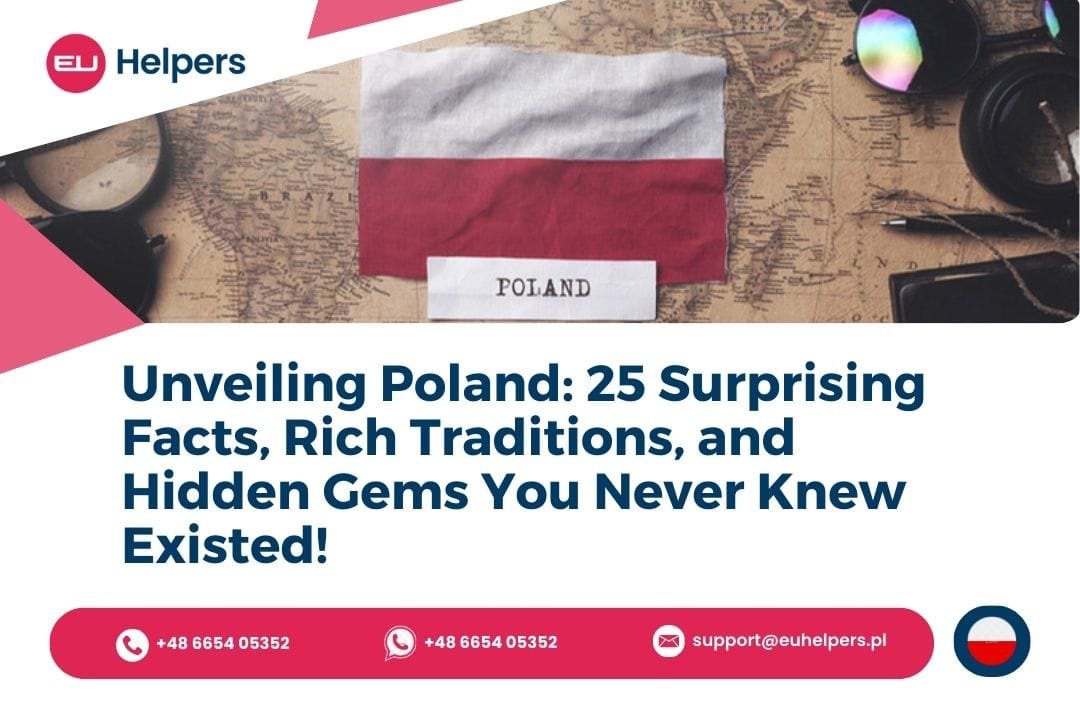Here are some lesser-known facts about Poland that can add depth to your trip:
1. Poland ranks as the 9th largest country in Europe, excluding Russia. Surprisingly, it surpasses the size of both Italy and the UK.
2. The name "Poland" (Polska) has a meaningful origin, stemming from the tribe Polanie, which translates to "people living in open fields."
3. Polish history is incredibly intricate, reminiscent of the complexity found in Game of Thrones. Delving into Polish Medieval History, particularly the period from 1138 to 1320, can leave one bewildered.
4. Throughout its history, Poland has faced numerous invasions and fought for its freedom through numerous insurrections, tallying over 40 instances. Astonishingly, Poland vanished from world maps between 1772 and 1795.
5. Poland boasted the world's second written constitution, adopted in the spring of 1791. Unfortunately, its effect was short-lived, lasting only 14 months and 3 weeks before Poland faced partitions that lasted over a century.
6. In 1853, Polish engineer Ignacy Lukasiewicz revolutionized street lighting by inventing the modern kerosene lamp. Although initially deployed in Lviv, Ukraine, these lamps still illuminate a street in Warsaw today.
7. The devastation of Warsaw during WWII necessitated a complete reconstruction. The current Old Town is not original but meticulously rebuilt after the war using detailed paintings by Bernardo Bellotto. Thus, it mirrors the 14th century rather than the 20th.
8. Marie Curie, renowned for her discoveries of Polonium and Radium, was of Polish origin, not French. Born Marie Sklodowska, she later married Pierre Curie. Curie made history as the first woman to win a Nobel Prize and the only person to win Nobel Prizes in two different sciences.
Joseph Conrad, known for his literary contributions, was also Polish. Born Teodor Józef Konrad Nałęcz-Korzeniowski, Conrad's heritage adds depth to his works.
9. Poland boasts a diverse landscape encompassing beaches, mountains, forests, deserts, and lakes. With nearly 800 km of coastline and several mountain ranges like the Tatra, Carpathian, Sudet, Bieszczady, and Świętokrzyskie, Poland offers varied natural beauty. Notably, it's home to the unique Central-European desert, Pustynia Błędowska, as well as rare features like dunes in Pomerania, wetlands in Biebrzański National Park, and islands in Woliński National Park.
10. Traditional Polish surnames undergo gender-specific modifications. Surnames ending in –ski/ska or –cka/cki function as adjectives and must agree with the gender. For instance, if the father's surname is Kowalski, his daughter's surname would be Kowalska. This distinction is often overlooked, as Polish surnames in the US typically use the male version.
11. In Poland's 380,000-acre (150,000-hectare) Białowieża Primeval Forest, Europe's last ancient forest, resides a population of 800 European bison, making it home to the continent's heaviest land animals.
12. From 1974 until its collapse in 1991, the Warsaw radio mast in Konstantynow held the title of the world's tallest structure, towering at 646.38 meters (2,120.7 ft), second only to the Burj Khalifa, completed in 2010.
13. Among Poland's 16 UNESCO World Heritage Sites stands Malbork Castle, acclaimed as the world's largest castle by area. While Prague Castle often lays claim to this title, it consists of multiple areas, unlike Malbork, which stands as a singular structure.
14. Wearing a hat indoors in Poland, whether in someone's home or a church, is considered impolite and disrespectful, particularly among the older generation.
15. The tradition of kissing a woman's hand remains fashionable in Poland, reflecting a sense of chivalry observed by Polish men, even in initial introductions between strangers.
16. In Poland, alongside birthdays, individuals celebrate their name day or imieniny, which honors the saint they are named after. This tradition holds significant importance as the names associated with each day are widely recognized and celebrated throughout the country.
17. Polish television employs a unique dubbing method, featuring a single individual voicing all characters in foreign movies and series. Despite this, the original audio remains faintly audible, allowing viewers to hear brief snippets of the original dialogue before it is translated into Polish.
18. Poland holds the distinction of being the world's largest exporter of amber, a prized gemstone. Visitors to Poland can explore exquisite souvenirs and jewelry crafted from this natural treasure.
19. Mushrooming is a cherished family activity in Poland, especially popular at the end of summer. Many Polish families venture into the forest to gather wild mushrooms, with children learning early on how to differentiate between edible and poisonous varieties.
20. Europe's oldest restaurant, "Piwnica Swidnicka," has been serving patrons in Wrocław since 1275 and continues to operate to this day. Visitors can experience centuries of history while enjoying a meal at this historic establishment.
21. In Poland, purchasing an even number of flowers for funerals is considered a faux pas. Additionally, certain flowers like chrysanthemums, white lilies, and red carnations are specifically reserved for funeral occasions, and using them for other events may be seen as inappropriate by some.
22. A beloved traditional Polish dish is the Zapiekanka, consisting of a baguette sliced in half, topped with cheese and mushrooms, and generously smothered in garlic mayo and ketchup—lots of ketchup.
23. The first latex condom was invented in 1912 by Julius Fromm, a Polish inventor who significantly improved upon rubber ones by making them thinner and more reliable. Ironically, discussions about contraception methods in Poland have persisted, with debates among politicians regarding their legality.
24. Poland celebrates its own version of Valentine's Day, known as Kupała or Wianki, observed on June 21st, the Feast of St. John the Baptist. Traditions include men jumping over bonfires and women crafting wreaths, with the hope of finding luck in love. Floating wreaths with candles on one side of a river to the other symbolizes this romantic anticipation.
25. Poland stands as one of Europe's most religious countries, evidenced by its popular Catholic TV station, Catholic radio, and the absence of a strict separation between religion and state. Notably, Poland boasts the tallest statue of Jesus in the world, reflecting its deeply rooted religious identity.

